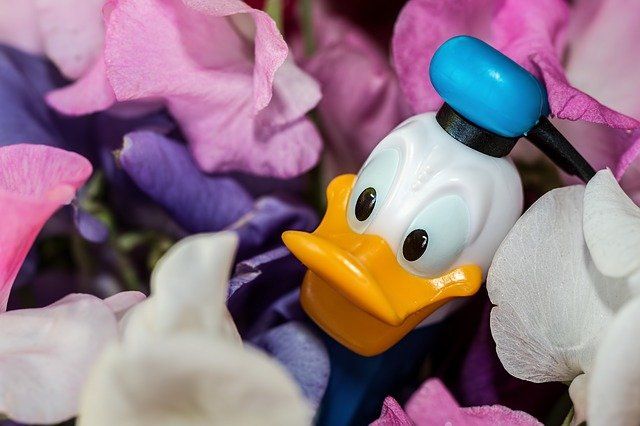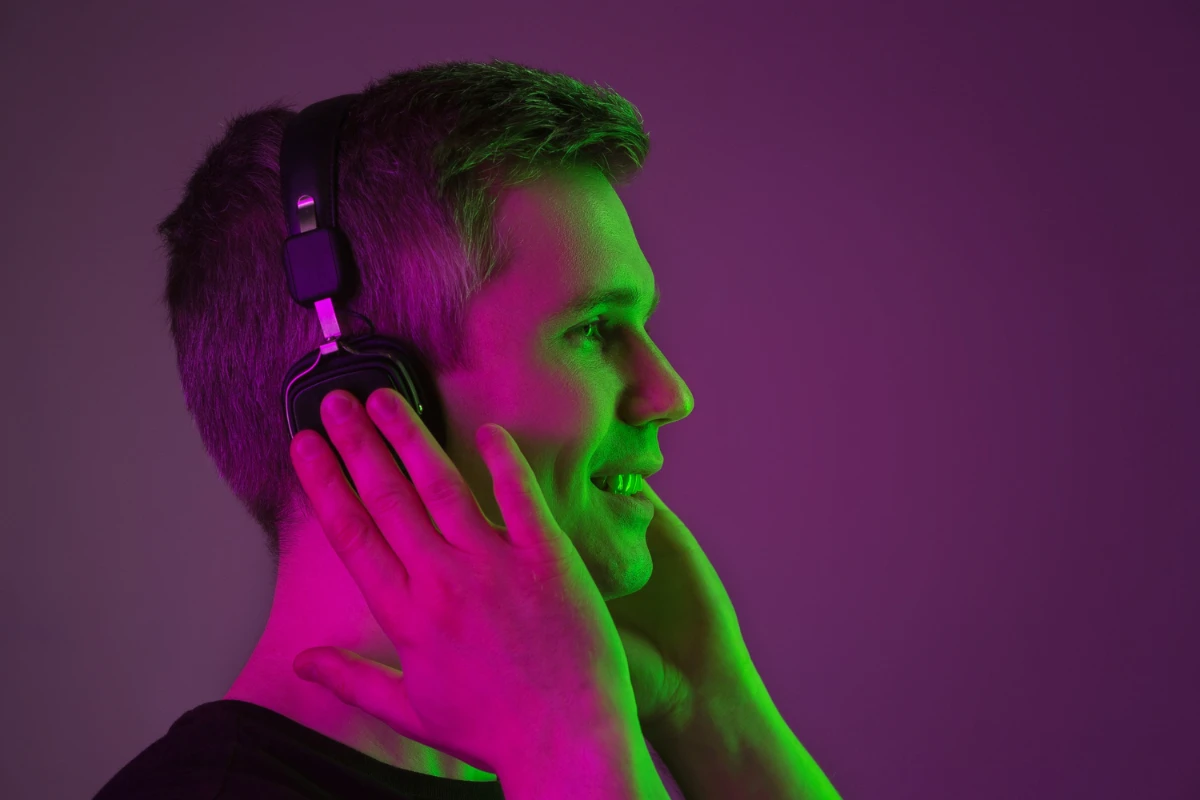Learn to meditate with Headspace
Discover how to learn to meditate easily and effectively with the Headspace app.

Meditation is an ancient practice that has been used in different cultures and religions to promote calm, inner peace, and emotional well-being. In the modern era, with the increase in stress and anxiety, more and more people are turning to meditation as a way to relax and find balance in their lives. In this article, we will explore how to learn to meditate with the Headspace app, a popular tool that guides you in your meditation practice.
Introduction to meditation and Headspace
Before diving into the details of using Headspace to meditate, it's important to understand what meditation is and how it can benefit your life. Meditation is a mental practice that involves concentration and focus on the present. Through various techniques, you can connect with your breath, observe your thoughts and emotions without judging them, and cultivate inner calm.

What is meditation?
The main goal of meditation is to train and calm the mind. By practicing regularly, you can improve your ability to concentrate, reduce stress and anxiety, and promote greater mental clarity. In addition, meditation can also help you connect with yourself, explore your emotions, and live in the present moment.
Getting to know Headspace: your meditation guide
Headspace is a meditation app that offers you a step-by-step guide to learn how to meditate. It was created by Andy Puddicombe, a former Buddhist monk and meditation expert. The app features a wide variety of meditation programs, ranging from basic introductions to specific meditations for sleep, stress, and productivity.
The practice of meditation can have multiple benefits for your physical and mental well-being. By dedicating a few minutes a day to meditate, you can experience a sense of calm and tranquility that extends to all areas of your life. In addition, meditation can help you improve your ability to concentrate and focus, which will be useful both at work and in your studies.

In addition to mental benefits, meditation can also have a positive impact on your physical health. Scientific studies have shown that regular meditation can reduce blood pressure, strengthen the immune system, and promote more restful sleep. Meditation has also been found to help alleviate symptoms of chronic illnesses such as depression, anxiety, and chronic pain.
Headspace, with its guided and structured approach, is an excellent tool for those who want to start meditating but don't know where to start. The app gives you the opportunity to learn different meditation techniques, from mindful breathing to creative visualization. In addition, you can choose from a variety of themed programs that adapt to your specific needs and goals.
The Headspace community is also a standout feature of the app. You can connect with other users and share your experiences, which can provide you with a greater sense of Support and motivation in your meditation practice. In addition, the application offers live group meditation sessions, where you can join other meditators from around the world for a collective experience of calm and connection.
Steps to meditate with Headspace
If you are interested in learning to meditate with Headspace, here are the basic steps to get started:
Meditation is an ancient practice that has numerous benefits for physical and mental health. Through meditation, you can learn to calm your mind, reduce stress, and improve your overall well-being. Headspace is an application that guides you through the meditation process, providing you with tools and techniques so that you can practice effectively.
Download and installation of the application
The first thing you should do is download and install the Headspace application on your mobile device or tablet. It is available for both iOS and Android. Once downloaded, simply follow the instructions to install it on your device.
Headspace has been developed by experts in meditation and mindfulness, so you can trust the quality of the application. In addition, it has an intuitive and easy-to-use interface, which makes it accessible for people of all ages and levels of experience.
Choose the right type of meditation for you
Headspace offers a variety of meditation programs for different needs and goals. Before starting, take a moment to explore the different programs available and choose those that best suit your needs and preferences.
For example, if you are looking to reduce stress, you can opt for the "Calming the Mind" meditation program. If you want to improve your concentration, you can try the "Focus and Attention" program. There are also specific programs to improve sleep, increase creativity and cultivate compassion, among others.
Setting up your meditation routine
Once you have chosen your meditation program, it is important to establish a regular routine. Choose a time of day when you can dedicate a few minutes to meditation and make sure to create a quiet, distraction-free space where you can meditate comfortably.
Consistency is key in the practice of meditation. Try to meditate at the same time every day so that it becomes a habit. You can choose to meditate in the morning to start the day with calmness and mental clarity, or in the evening to relax and prepare for a restful sleep.
In addition, it is important to find a comfortable posture for meditation. You can sit on a chair with your back straight and your feet on the floor, or you can opt for the lotus position if you feel more comfortable. The most important thing is to maintain a position that allows you to be relaxed but alert.
Remember that meditation is a gradual process and that each person has their own pace. Do not pressure yourself to achieve immediate results, simply enjoy the process and give yourself time to explore and grow in your meditation practice.
Benefits of meditation with Headspace
Meditation with Headspace can offer you a wide range of benefits for your mind, body, and emotions. Some of these benefits include:
Improved concentration and attention
Regular meditation can help you develop a greater ability to concentrate and focus on your daily tasks. As you practice mindfulness, you will learn to keep your attention in the present and avoid distractions. This can be especially useful in a world full of notifications and constant requests.
In addition, meditation with Headspace gives you the opportunity to train your mind to be more aware of your thoughts and emotions. As you immerse yourself in the practice, you will notice how your mind tends to wander and how you can redirect your attention to the present moment. This skill of focus and concentration can be applied in all areas of your life, from work to personal relationships.
Stress and anxiety reduction
One of the most well-known benefits of meditation is its ability to reduce stress and anxiety. Through the practice of meditation, you can learn to calm down and relax, releasing accumulated tension in your body and mind. This can have a significant impact on your overall well-being and improve your ability to cope with stressful situations.
In addition, meditation with Headspace provides you with specific techniques for managing stress and anxiety. You will learn to identify your stress triggers and use breathing and visualization tools to reduce the fight or flight response in your body. These practices will help you cultivate calmness and serenity in moments of tension.
Promotion of emotional wellbeing
Meditation can also help you explore and manage your emotions. By developing greater awareness of your internal states, you can learn to recognize and regulate your emotions more effectively. This can lead to greater emotional stability and a greater sense of well-being in your daily life.
With Headspace, you will have access to guided meditations that will help you explore your emotions and cultivate compassion towards yourself and others. As you immerse yourself in these practices, you will realize how your emotions can change and fluctuate, and how you can develop a more balanced and compassionate attitude towards them. This will allow you to live with greater fullness and acceptance.
Tips for an effective meditation experience
Creating a conducive environment for meditation
It is important to create a conducive environment for meditation practice. Choose a quiet, distraction-free place where you can sit comfortably. You can decorate it with elements that convey peace and calm, such as candles, incense, or inspiring images.
In addition, you can add natural elements to your meditation space, such as plants or stones, to connect with the energy of nature. These elements can help you create a relaxing and harmonious atmosphere conducive to deep meditation.
It is also advisable to adjust the lighting in your meditation space. You can opt for soft, dim light that generates a sense of tranquility and facilitates concentration. Avoid bright or intense light, as it can distract you during practice.
Maintaining consistency in your practice
The key to gaining lasting benefits from meditation is regular practice. Establish a daily or weekly routine and stay committed to your practice. Although it may seem difficult at first, over time it will become easier and you will feel the benefits more and more.
In addition, it is important to remember that meditation does not necessarily have to be long. Even a few minutes a day can make a difference. If you find it difficult to find time to meditate, you can take advantage of times of the day like waking up in the morning or before going to sleep to dedicate a few moments to your practice.
To maintain consistency in your practice, you can set realistic and achievable goals. For example, you can aim to meditate for 10 minutes a day for a week and then gradually increase the time. gradually over time. Celebrating your achievements and rewarding yourself for your commitment can also be an additional motivation.
Dealing with distractions during meditation
During meditation, it's normal for thoughts or distractions to arise. Instead of fighting them, simply observe them and let them go without judgment. Return your attention to your breathing or the object of meditation. Remember that meditation does not involve completely eliminating thoughts, but learning to relate to them differently.
A useful technique for dealing with distractions is to use your breath as an anchor. Focus your attention on the sensation of breath coming in and out of your body. When you notice that your mind has wandered, gently direct your attention back towards the breath. This practice will help you cultivate concentration and decrease the influence of intrusive thoughts.
Moreover, it's important to remember that meditation is a gradual process and each session is an opportunity to learn and grow. Don't judge or frustrate yourself if you encounter difficulties during practice. Allow yourself to be kind to yourself and continue with your commitment to meditate regularly.
Final thoughts on meditation with Headspace
Is Headspace the right meditation tool for you?
Headspace is a popular and effective tool for learning to meditate and cultivating a regular meditation practice. However, every person is unique, so it's important to explore different options and find the meditation tool that best suits your individual needs and preferences.
Meditation is an ancient practice that has been used by various cultures throughout history. Its main goal is to achieve a state of calmness and mental tranquility, as well as improving concentration and mindfulness. Headspace has managed to capture the essence of this millennia-old practice and bring it into the modern world through an easy-to-use app accessible to everyone.
By using Headspace, you'll have access to a wide variety of guided meditations that address different aspects of life, such as stress, anxiety, sleep, and creativity. These meditations are designed to adapt to your level of experience and specific needs, allowing you to customize your meditation practice according to your preferences.
How to integrate Headspace into your daily life
Lastly, remember that meditation is not just a practice you do for a few minutes a day, but a lifestyle. Try to bring the mindfulness and calmness you find in meditation into all areas of your life. This will help you live more consciously and make the most of your experience with Headspace and meditation in general.
In addition to using the Headspace app, you can complement your meditation practice with other activities that promote relaxation and well-being. For example, you can practice yoga, go for walks in nature, or simply dedicate a few minutes each day to deep breathing and observing your thoughts without judgment.
Remember that meditation is a gradual process and the benefits are not experienced overnight. It's important to be patient and consistent in your practice, allowing yourself to grow and develop at your own pace.
So what are you waiting for? Take this unique opportunity to explore within yourself, find peace and serenity amidst the daily hustle. Headspace awaits you with open arms to guide you on this journey towards a calmer mind and a more open heart.
















































































































































































































